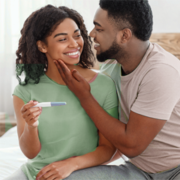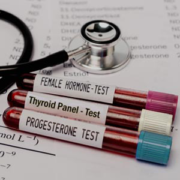Fertility Diagnostics Tests & Procedures
| Test |
Best time taken |
Purpose |
| Body temperature |
Throughout the cycle |
Determine whether you are ovulating and length of luteal phase |
| Cervical Fluid Ferning Slide |
Days of wet & slippery cervical fluid |
Determine if your cervical fluid is fertile and if you are producing enough |
| Postcoital Test |
Close to ovulation |
Determine if the sperm can survive in the cervical fluid |
| Cervical fluid ferning slide |
Before ovulation, when cervical fluid is wet & slippery |
Determine if your cervical fluid is fertile |
| Ultrasound |
Several times before ovulation |
Evaluate follicle maturation & size, ovulation, and endometrial thickness |
| Endometrial biopsy |
1 or 2 days before the expected period |
Determine if the luteal phase is long enough and the uterine lining is suitable |
| Hysterosalpingogram (HSG) |
The week after the period ends |
Identify if the fallopian tubes are clear & uterine cavity normal |
| Hysteroscopy |
Before ovulation |
Examine if the uterine cavity is normal |
| Laparoscopy |
Before ovulation |
Diagnose & treat pelvic conditions, such as endometriosis |
| Hormone blood tests |
Various times during the cycle |
Examine if you produce enough of the necessary hormones |
| Ovarian reserve tests |
Various times during the cycle |
Determine the quality & quantity of your eggs |
Ovarian Reserve Tests
Women are born with around 300,000 eggs and as she ages, this quantity declines to cause fertility to decline in a steady way until age 37. After this age, fertility decreases more rapidly in most women until menopause. Some questions that women of a certain age have include:
- What is the status of my fertility?
- How many years of fertility do I have left?
- How well will my body react to assisted reproductive technologies, such as IVF?
Although the quality and quantity of eggs decline for all women, the extent to which they do is unique for every woman, therefore it is important to test your so-called “ovarian reserve”. There are various diagnostic tests, and ideally, you should try two or three of them for better assessment of your ability to conceive.
Antral Follicle Count
Through a vaginal ultrasound, a radiologist can measure the number of immature resting follicles you have available for a given cycle. These follicles can develop into mature follicles that can hold the egg. The number of resting follicles tends to be consistent from one cycle to the next.
This test is done on day 3 of the cycle and is usually done in women who wish to try IVF or women younger than 30 who wish to determine their future fertility. The more immature follicles you have, the more eggs you can produce that cycle. If you have 6-10, you will likely have a normal response to IVF. As for women younger than 30, the more follicles you have, the more years of fertility you have left.
Anti Mullerian Hormone (AMH) Test
AMH is a hormone produced by immature follicles. The AMH test is a blood test that measures the number of remaining eggs in a woman’s ovarian reserve and can be performed on any day of the cycle. AMH levels are considered to be a better pregnancy predictor than FSH levels. Typically, AMH levels decrease as women age. Therefore, it is important to consider the AMH levels in relation with the woman’s age. Normally, the higher the AMH levels, the higher the fertility and the better response to IVF.
| Age |
AMH Levels |
| < 33 Years |
2.1 ng/mL |
| 33-37 Years |
1.7 ng/mL |
| 38-40 Years |
1.1 ng/mL |
| = 41+ Years |
0.5 ng/mL |
| Interpretation(women under age 35) |
AMH Levels |
| High (often PCOS) |
> 4.0 ng/mL |
| Normal |
1.5- 4.0 ng/mL |
| Low Normal Range |
1.0- 1.5 ng/mL |
| Low |
0.5- 1.0 ng/mL |
| Very Low |
< 0.5 ng/mL |
Considerations:
- AMH levels in women over 42 are considered unreliable.
- AMH levels can predict the number of eggs but do not provide any information about the quality of eggs.
- Women with PCOS typically have very high AMH levels, as they have an excessive number of immature follicles.
Estradiol Test
This blood test performed on day 3 of the cycle can discover some cases of decreased egg quantity and quality that have normal day 3 FSH levels. Normal values on Day 3 include a low FSH level in conjunction with a low estradiol level. If the FSH is normal but the estradiol level is elevated, the high estradiol will often be artificially “suppressing” the FSH level down to the normal range.
The idea of using day 3 estradiol levels as an adjunct in evaluating egg quantity and quality is relatively recent and so clearly defined cutoff values for normal are not well established. In one lab, normal cut off values for estradiol on day 3 should be less than 80.






